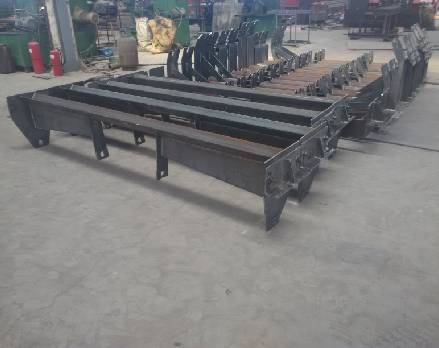 Afrikaans
Afrikaans  Albanian
Albanian  Amharic
Amharic  Arabic
Arabic  Armenian
Armenian  Azerbaijani
Azerbaijani  Basque
Basque  Belarusian
Belarusian  Bengali
Bengali  Bosnian
Bosnian  Bulgarian
Bulgarian  Catalan
Catalan  Cebuano
Cebuano  Corsican
Corsican  Croatian
Croatian  Czech
Czech  Danish
Danish  Dutch
Dutch  English
English  Esperanto
Esperanto  Estonian
Estonian  Finnish
Finnish  French
French  Frisian
Frisian  Galician
Galician  Georgian
Georgian  German
German  Greek
Greek  Gujarati
Gujarati  Haitian Creole
Haitian Creole  hausa
hausa  hawaiian
hawaiian  Hebrew
Hebrew  Hindi
Hindi  Miao
Miao  Hungarian
Hungarian  Icelandic
Icelandic  igbo
igbo  Indonesian
Indonesian  irish
irish  Italian
Italian  Japanese
Japanese  Javanese
Javanese  Kannada
Kannada  kazakh
kazakh  Khmer
Khmer  Rwandese
Rwandese  Korean
Korean  Kurdish
Kurdish  Kyrgyz
Kyrgyz  Lao
Lao  Latin
Latin  Latvian
Latvian  Lithuanian
Lithuanian  Luxembourgish
Luxembourgish  Macedonian
Macedonian  Malgashi
Malgashi  Malay
Malay  Malayalam
Malayalam  Maltese
Maltese  Maori
Maori  Marathi
Marathi  Mongolian
Mongolian  Myanmar
Myanmar  Nepali
Nepali  Norwegian
Norwegian  Norwegian
Norwegian  Occitan
Occitan  Pashto
Pashto  Persian
Persian  Polish
Polish  Portuguese
Portuguese  Punjabi
Punjabi  Romanian
Romanian  Russian
Russian  Samoan
Samoan  Scottish Gaelic
Scottish Gaelic  Serbian
Serbian  Sesotho
Sesotho  Shona
Shona  Sindhi
Sindhi  Sinhala
Sinhala  Slovak
Slovak  Slovenian
Slovenian  Somali
Somali  Spanish
Spanish  Sundanese
Sundanese  Swahili
Swahili  Swedish
Swedish  Tagalog
Tagalog  Tajik
Tajik  Tamil
Tamil  Tatar
Tatar  Telugu
Telugu  Thai
Thai  Turkish
Turkish  Turkmen
Turkmen  Ukrainian
Ukrainian  Urdu
Urdu  Uighur
Uighur  Uzbek
Uzbek  Vietnamese
Vietnamese  Welsh
Welsh  Bantu
Bantu  Yiddish
Yiddish  Yoruba
Yoruba  Zulu
Zulu Understanding the Role of Belt Drive Idler in Mechanical Systems and Its Benefits
Belt Drive Idler An Overview and Functionality
In the realm of mechanical engineering, the belt drive system is one of the most widely used power transmission methods. This system is lauded for its efficiency, simplicity, and versatility. Among its critical components are the idlers, which play a significant role in the performance and longevity of the belt drive system. This article delves into the intricacies of belt drive idlers, exploring their functions, types, and applications in various industries.
What is a Belt Drive Idler?
A belt drive idler is a pulley-like component that helps maintain the proper tension and alignment of the belt in a belt drive system. It does not transmit power from one shaft to another, but rather serves to guide and support the belt, ensuring its effective operation. Idlers can be found in various configurations, including fixed and adjustable types, depending on the specific requirements of the application.
Functions of Belt Drive Idlers
1. Tension Maintenance One of the primary roles of a belt drive idler is to keep the belt under the correct tension. Proper tension is crucial for efficient power transmission; if the belt is too loose, it may slip or derail, leading to reduced performance and potential damage to the system.
2. Belt Alignment Idlers help maintain the alignment of the belt, reducing friction and wear on both the belt and the pulleys. Misalignment can lead to premature failure of the belt and its related components, making idlers essential for operational reliability.
3. Preventing Slippage By providing additional contact points for the belt, idlers help prevent slippage between the belt and the drive pulleys. This ensures that the maximum power transfer is achieved, which is particularly important in applications with high torque requirements.
4. Vibration Dampening Idlers can also help dampen vibrations that may occur within the system. Excessive vibration can lead to wear and tear on both the belt and the pulleys, resulting in a loss of efficiency and increasing maintenance costs.
Types of Belt Drive Idlers
belt drive idler

Belt drive idlers come in various types, each suited for different applications
1. Fixed Idlers These are stationary components that maintain the belt tension and guidance. Fixed idlers are commonly used in horizontal drive systems where the tension and alignment do not need frequent adjustments.
2. Adjustable Idlers These idlers provide the capability to modify the tension in the belt system. They are often found in applications where the operational conditions may change, necessitating adjustments to maintain optimal belt tension.
3. Guide Idlers Specifically designed to keep the belt aligned, guide idlers are essential in systems where the path of the belt may change direction or where high precision is required.
4. Tensioning Idlers These are equipped with mechanisms that allow for automatic adjustments of belt tension based on operational conditions. Tensioning idlers are ideal for dynamic applications where the load can fluctuate significantly.
Applications of Belt Drive Idlers
Belt drive idlers are utilized across a wide range of industries due to their adaptability. Common applications include
- Automotive In vehicles, belt drive systems with idlers are used to operate various components, such as alternators, water pumps, and air conditioning units. - Manufacturing In industrial settings, belt drive systems are often employed in conveyor systems, where idlers help maintain the efficiency and reliability of material transport. - Agriculture Belt drives with idlers can be found in farming equipment, assisting with the operation of machinery such as tractors and harvesters.
Conclusion
Belt drive idlers are indispensable components in the design of efficient and reliable belt drive systems. Their ability to maintain tension, ensure alignment, reduce slippage, and dampen vibrations significantly enhances the performance of various mechanical systems across industries. As technology advances, the design and functionality of belt drive idlers will likely evolve, continuing to play a crucial role in power transmission solutions. Understanding their importance is essential for engineers and technicians who strive to optimize system performance and reliability.
-
Revolutionizing Conveyor Reliability with Advanced Rubber Lagging PulleysNewsJul.22,2025
-
Powering Precision and Durability with Expert Manufacturers of Conveyor ComponentsNewsJul.22,2025
-
Optimizing Conveyor Systems with Advanced Conveyor AccessoriesNewsJul.22,2025
-
Maximize Conveyor Efficiency with Quality Conveyor Idler PulleysNewsJul.22,2025
-
Future-Proof Your Conveyor System with High-Performance Polyurethane RollerNewsJul.22,2025
-
Driving Efficiency Forward with Quality Idlers and RollersNewsJul.22,2025





























